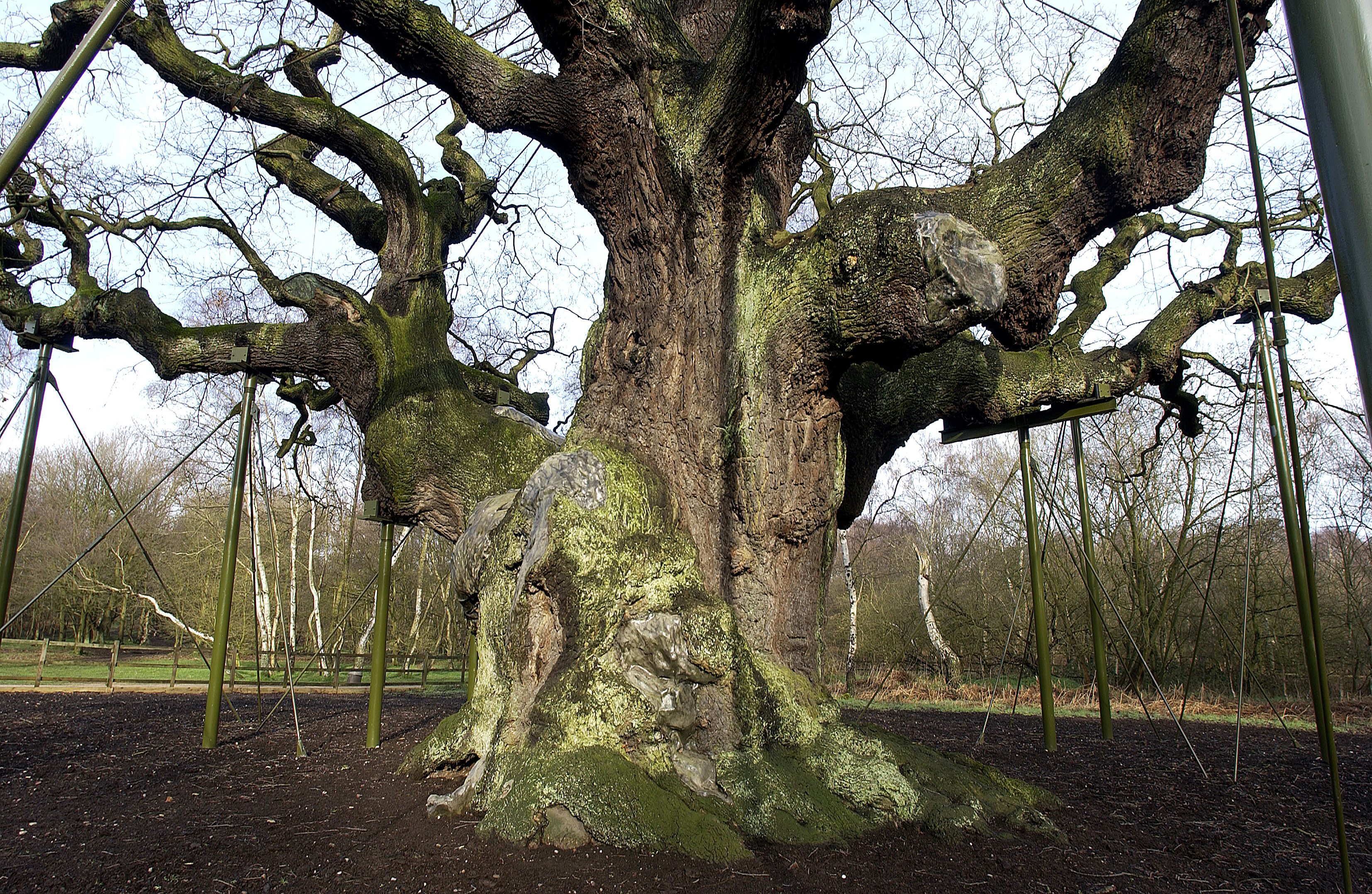Oak
Oak includes our native oak species pedunculate oak (Quercus robur), sessile oak (Quercus petraea) and hybrids between the two (Quercus x rosacea). Where the species is unknown the tree can be recorded as oak.
One of the most well known ancient oaks in the UK is the Major Oak in Nottinghamshire.

Ancient oak. (Photo: David Alderman)

Veteran oak. (Photo: David Alderman)
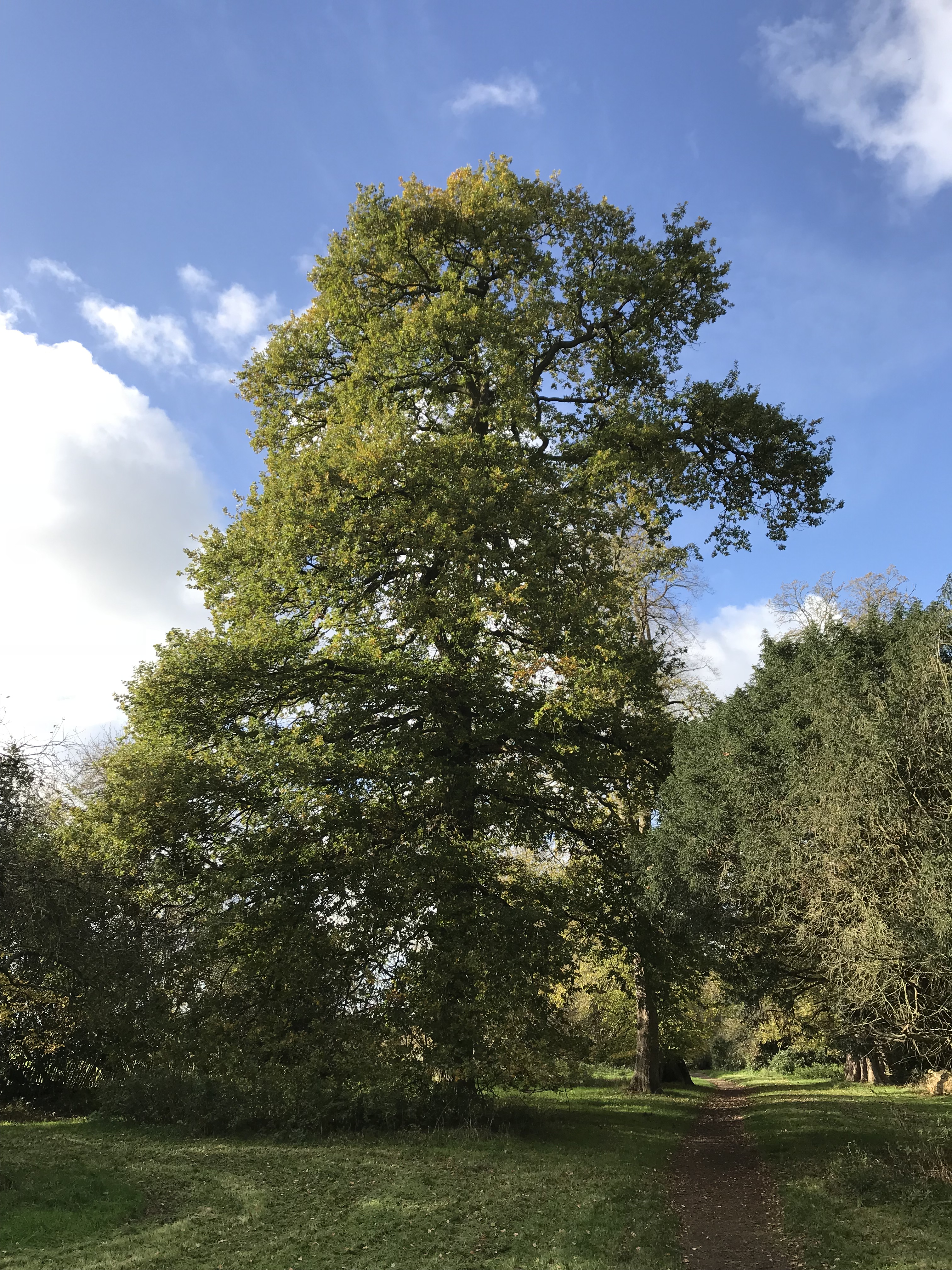
Notable oak. (Photo: David Alderman)
Distribution
Throughout the UK, other than in the high uplands and on chalk and limestone soils.
Typical location
Hedgerows, parkland, designed landscapes, fields, woodland and wood pasture. Occasionally avenues, street trees and gardens.
Age
Oak may live for 1,000 years, although 600 may be more typical on many sites.
All oak are classed as ancient from 400 years onwards, although many will have ancient characteristics from around 300 years.
Typically a veteran oak is 150-300 years of age and a notable oak is 150-200 years old.
Girth size
Up to 10m plus in girth. Record all oak more than 4.5m.
Consider recording oak with any ancient characteristics and a girth more than 3m.
It’s important to rely on characteristics rather than size, which is an unreliable indication of age. Most ancient oak are greater than 6m in girth if they grow in oak woodland, but oak that have been previously managed as a pollard may be no more than 3.5m in girth.
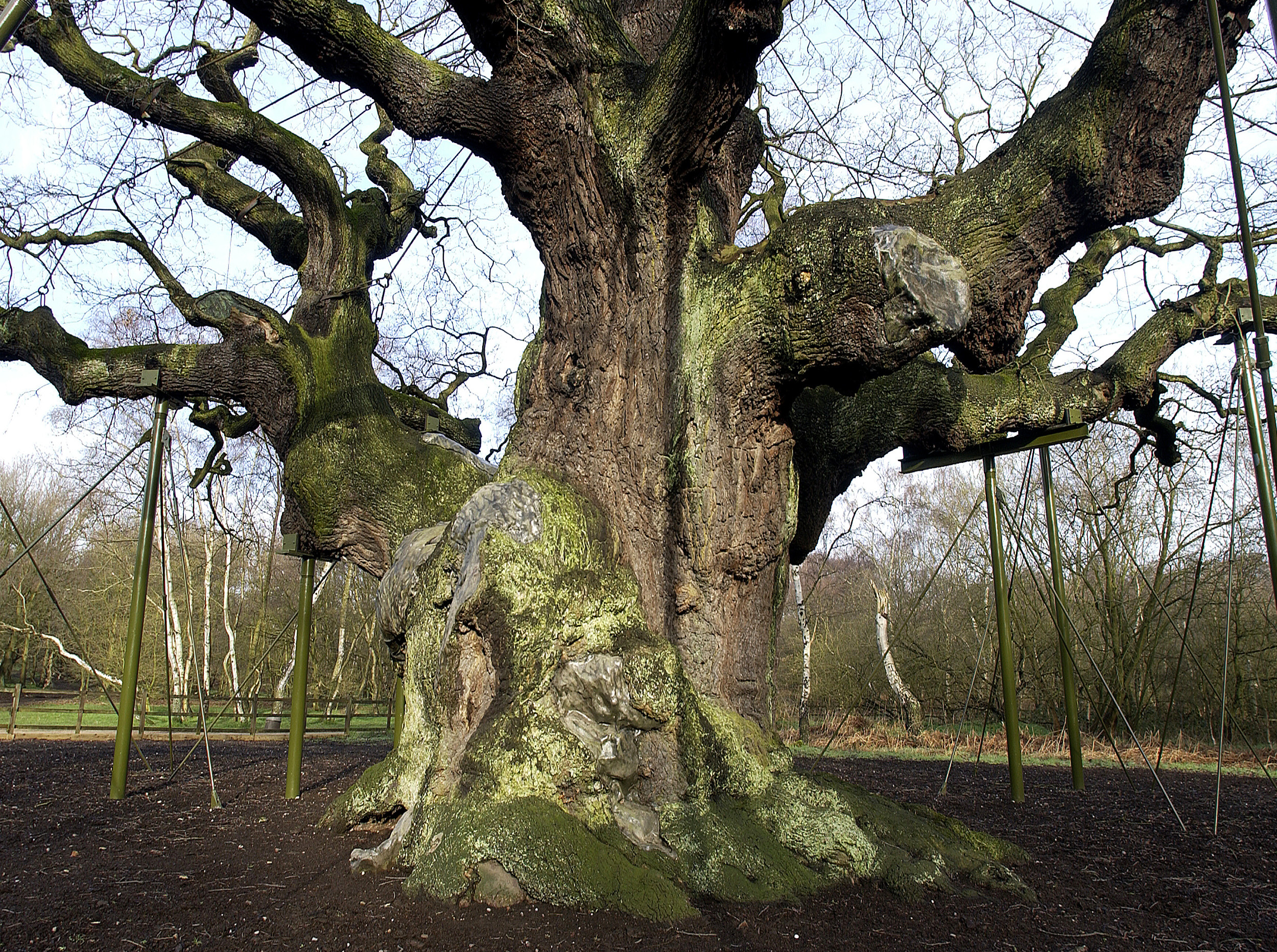
One of the most well known ancient oaks is the Major Oak in Sherwood Forest. (Photo: WTML)
Ancient characteristics of oak trees
- Girth is large
- Major trunk cavities or progressive hollowing
- Decay holes
- Physical damage to trunk
- Bark loss
- Large quantities of dead wood in the canopy
- Crevices in the bark, under branches or on the root plate, sheltered from direct rainfall
- Fungal fruiting bodies (from heart rotting species)
- A high number of interdependent wildlife species
In addition, oak trees may also have
- A pollard form or show indications of past management
- Cultural or historic value
- A prominent position in the landscape

Hollowing or major trunk cavities. (Photo: David Alderman)
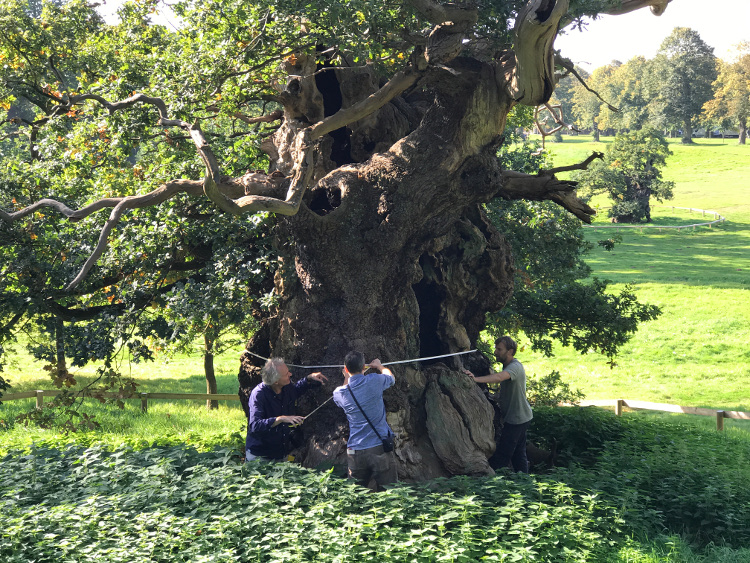
Large girth. (Photo: David Alderman)

Look for holes. (Photo: Kylie Harrison Mellor)
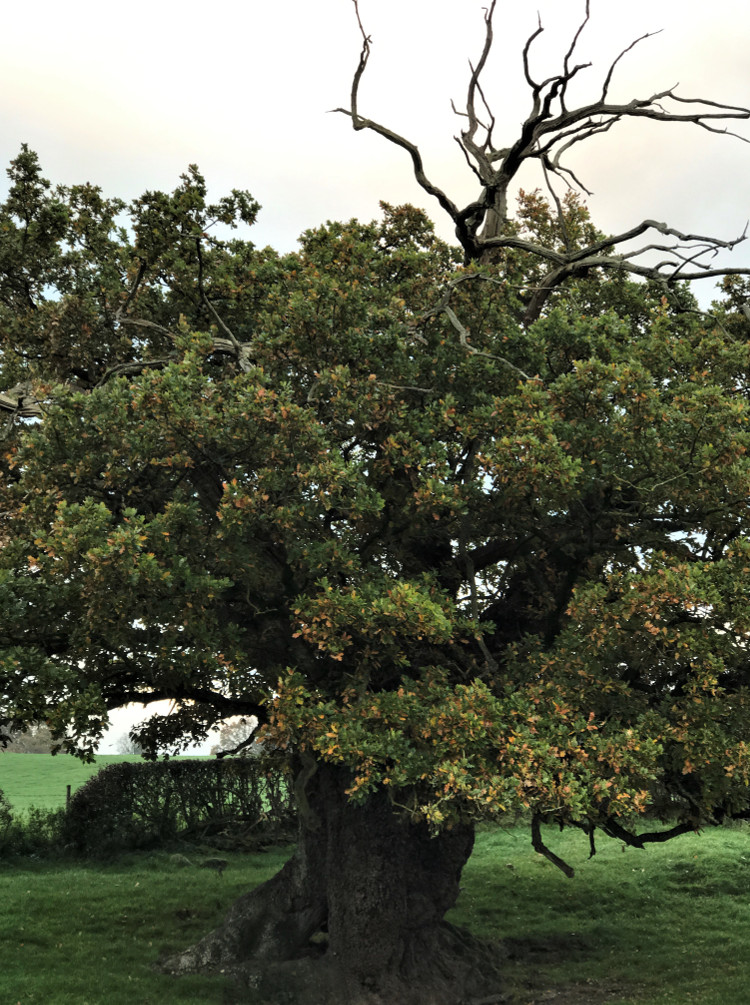
Dead wood in the canopy. (Photo: David Alderman)

Hollowing of the trunk. (Photo: David Alderman)

Look for holes and evidence of hollowing. (Photo: David Alderman)
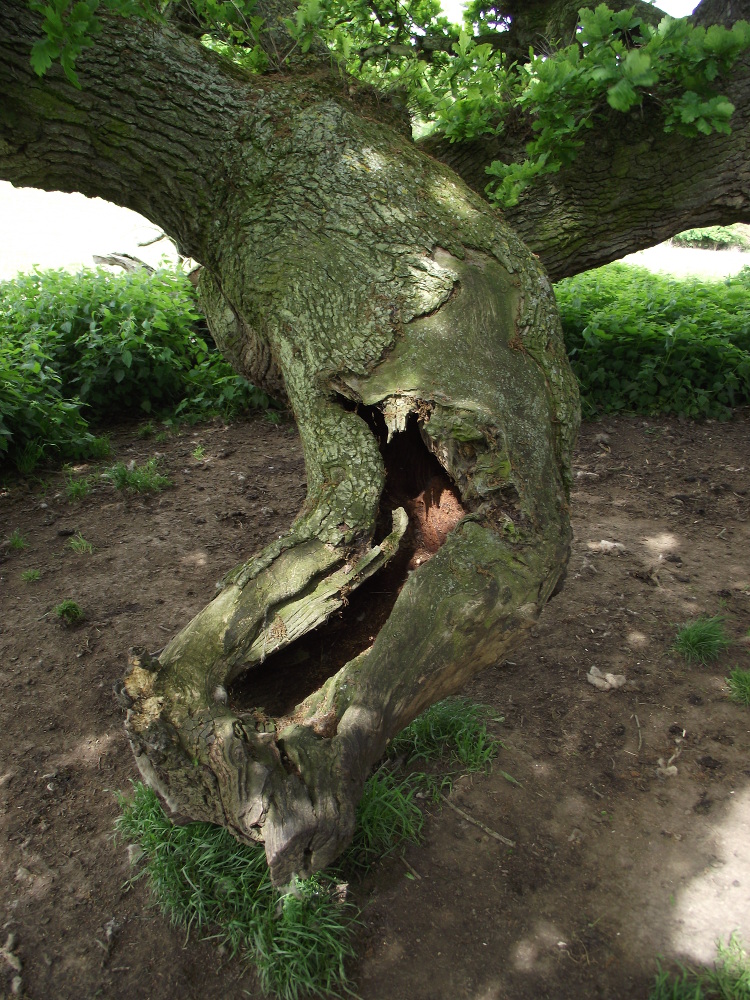
Hollowing branches. (Photo: Kylie Harrison Mellor
